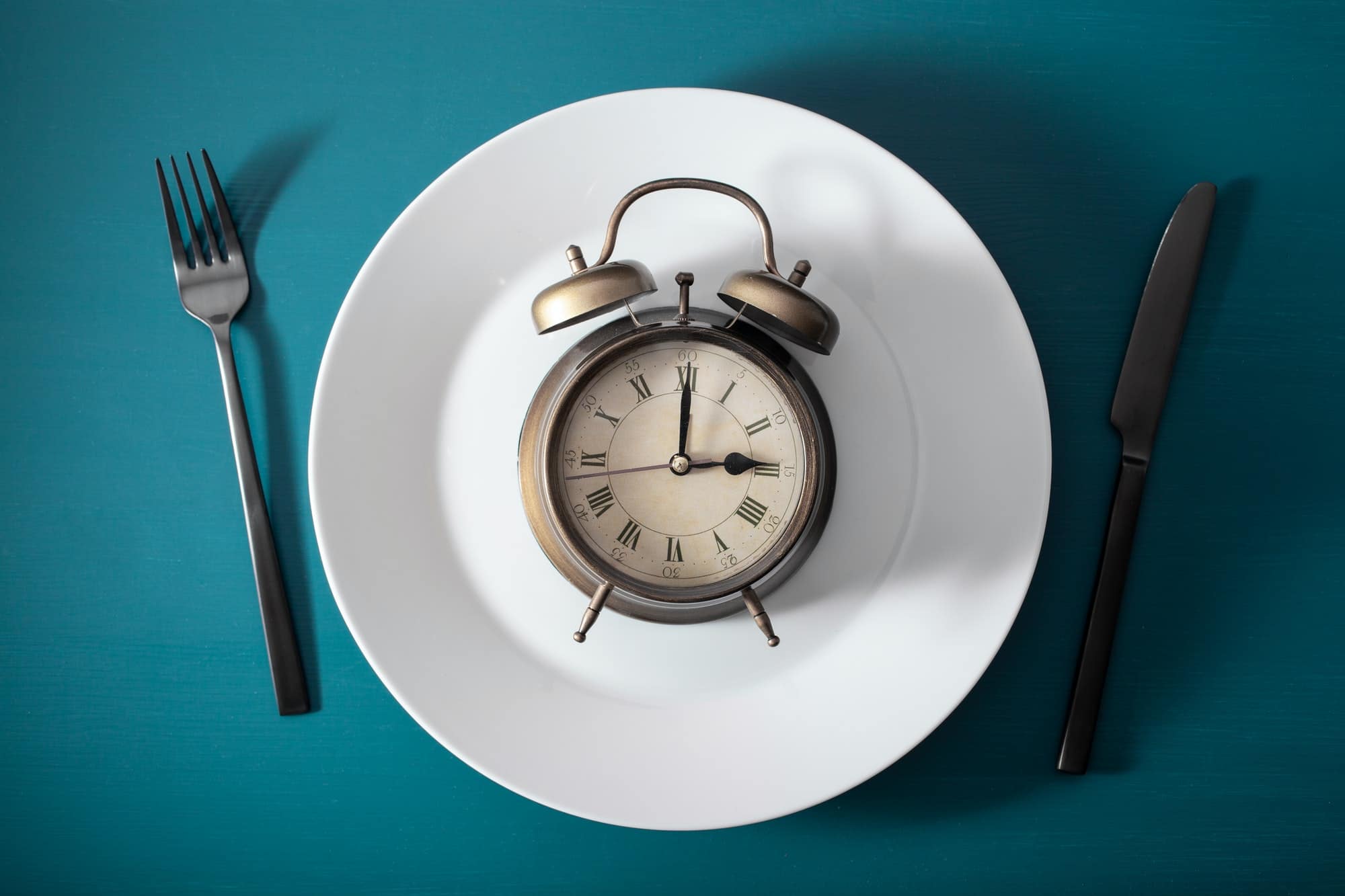Intermittent Fasting for Women in Menopause
with THE GALVESTON DIET

Intermittent Fasting (IF) is part of the three-pronged approach for healthy living espoused by Dr. Mary Claire Haver and The Galveston Diet. IF has been proven to have a significant impact on hormones, such as insulin and cortisol, as well as physiology.
At first, the concept of “fasting” can feel daunting as one imagines going without food for hours. Once you realize it is a matter of discipline and not deprivation, the practice can be easily integrated and adapted to the busiest of lifestyles. Just remember it is about when you eat as you alternate between set hours of fasting-or, no caloric input, and eating healthful anti-inflammatory food choices.
Benefits of Intermittent Fasting
- Decreases Chronic Inflammation
- Lowers Cardiovascular Risk
- Improves Insulin Resistance
- Improves Cognitive Functions Like Memory & Mood
- Increases Energy Levels
Intermittent Fasting Times
There are a few varieties of Intermittent Fasting, so you can find one that works for you.
The most common form of Intermittent Fasting and the one preferred by most Galveston Diet practitioners and coaches is 16:8. This is a 16-hour fasting state followed by an 8-hour eating window. Depending on your schedule and blood sugar needs, you might opt for a variation on the hours from anywhere between 15:9 to 20:4. To truly be considered Intermittent Fasting, you must go for at least 15 hours without caloric input. Each hour less than that diminishes the health benefits and is more akin to the typical break with sleeping.
Dr. Mary Claire Haver is committed to keeping her finger on the pulse of the latest science behind the advice she prescribes, so The Galveston Diet frequently cites the work of scientists and her fellow physicians. One such source is Mark Mattson, a neuroscientist at John Hopkins, who broke down the physiological phenomenons of Intermittent Fasting in The New York Times: “It takes 10 to 12 hours to use up the calories in the liver before a metabolic shift occurs to using stored fat.” He said that “Most people trying to lose weight should strive for 16 calorie-free hours.”
Metabolic Switching
When properly employed, Intermittent Fasting ignites a process called “metabolic switching.” Regular eating supplies a steady flow of glucose to be utilized as energy. When we take longer breaks between eating, the glucose supply is drained, insulin levels go down, and the body is forced to dip into fat stores for fuel, so we start to burn body fat.
The fasting state is best supported by good hydration while being mindful not to introduce sneaky liquid calories as one often does when making additions to coffee or tea, such as milk, cream, or sweeteners. You are best served to stick to black coffee, herbal tea, or water spiked infusions using a splash of citrus fruits like lemon or pulverizing herbs-like mint for flavor and a boost of antioxidants. It is also important to realize that zero-calorie sweeteners can still trigger an insulin response and are disruptive to the fasting state and the gut and endocrine system. Don’t derail yourself for the quick-hit high of dopamine they provide.
Start making mindful, incremental changes to stretch the hours between eating by upping your hydration. Researching plants the seed, but habits take time and encouragement to grow. If new practices, like Intermittent Fasting, are tended to with care through coaching and practice, they can take root, and you, in turn, can benefit from them and flourish.
Intermittent Fasting Tips for Women
Work your way up to the Intermittent Fasting method preferred by most coaches and practitioners of The Galveston Diet, which is 16:8. That means a 16-hour fasting window of zero caloric intake and an 8-hour window for eating.
Depending on your schedule and blood sugar needs, you might opt for a variation on the hours from anywhere between 15:9 to 20:4. To truly be considered Intermittent Fasting, you must go for at least 15 hours without caloric input. Each hour less than that diminishes the health benefits and is more akin to the typical break with sleeping.
- Don’t worry about being perfect; make it a practice, and know it gets easier over time.
- The fasting state is best supported by good hydration, so focus on increasing your water intake.
- Be mindful not to introduce sneaky liquid calories as one often does when making additions to coffee or tea, such as milk, cream, or sweeteners.
- For alternatives to water, stick to zero-calorie drinks like black coffee, herbal tea, or spiked water infusions using a splash of citrus fruits like lemon or pulverizing herbs-like mint for flavor and a boost of antioxidants.
- It is also important to realize that zero-calorie sweeteners can still trigger an insulin response and are disruptive to the fasting state and the gut and endocrine system. Don’t derail yourself for the quick-hit high of dopamine they provide.
- Ease into breaking your fast by choosing nutritious options.
Intermittent Fasting & The Galveston Diet
Intermittent fasting is a vital component of The Galveston Diet – and studies prove that you are much more likely to be successful in your endeavor if you understand the science. We encourage you to start gradually, do not be afraid of failure, and continue to make choices that promote your health and wellbeing. We support scale victories as well as non-scale achievements, and we hope to celebrate yours!
"Finally Lost My Baby Weight From 29 Years Ago!"
I started intermittent fasting last October, joined The Galveston Diet private group, and that’s when the weight loss kicked into high gear. By Feb I was down 10 lbs and feeling amazing!
Bottomed out at 34 lbs lost on June 2 at 139.4, All during a frickin pandemic! (Finally lost my baby weight from 29 years ago! I weighed 140 when I got pregnant the first time in 1991!)
– Laura J.


More on Intermittent Fasting:

Why You Should Start Fasting This Holiday Season
I know what you are thinking…It is just NOT practical or doable to fast during the holidays!! But I promise, this can work. If you

Can Intermittent Fasting Change The Aging Process?
Previous studies have shown that intermittent fasting (IF) is beneficial for slowing down theaging process and losing weight, but a recent Harvard study is exploring

Menopause and Intermittent Fasting
When beginning your journey with intermittent fasting (IF), I challenge you to fail. Yes – you read that correctly. I would be lying if I

Three Amazing Health Benefits that Accompany Intermittent Fasting
I think when most of us are initially attracted to the Galveston Diet it is for the incredible weight loss results that have been experienced
